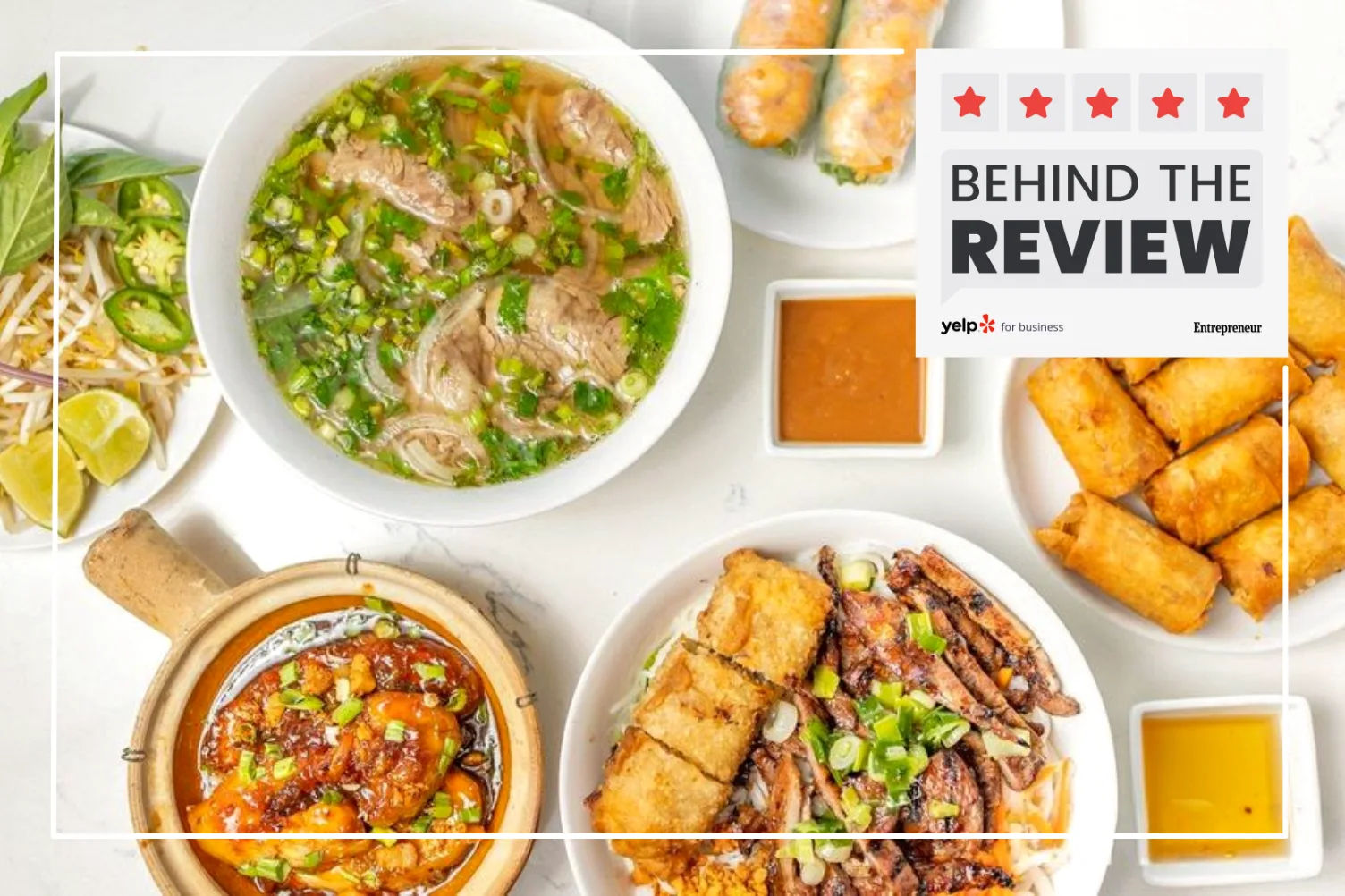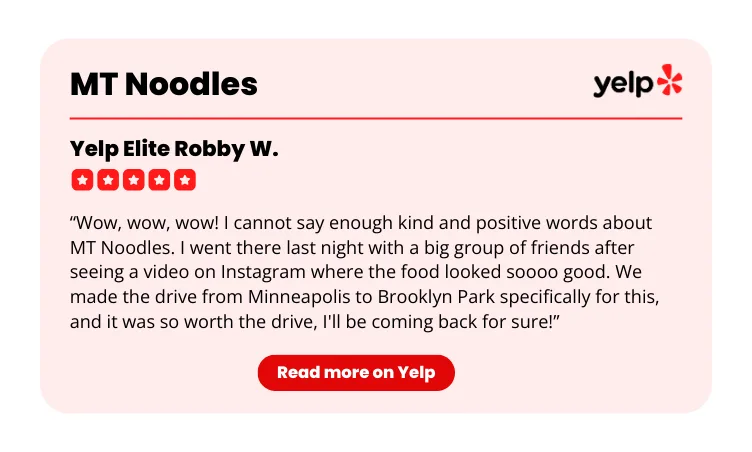Understanding the cycle of customer feedback

Justin Bui and his family consistently earn glowing reviews at MT Noodles, a local favorite for Vietnamese food in the suburbs of Minneapolis, Minnesota. According to Justin, what makes MT Noodles successful is the open line of feedback between front of house, back of house, and customers.
“We’ve been really blessed with having a great staff that’s able to communicate to all of our customers and really understand our priorities,” Justin said. “As a business owner, you really want to immediately set the boundaries and the priorities for both sides, front and back of house.”
Reviews are also a crucial part of keeping that communication flowing. It’s how Justin gauges the restaurant’s success, identifies places for improvement, motivates the team, and much more. Below, Justin breaks down the cycle of service and feedback into four key steps.
1. Prioritize customer service and education
Justin’s mom Anh Bui opened MT Noodles in 2014 with the goal of sharing authentic Vietnamese dishes with the Minneapolis community. Educating customers about Vietnamese cuisine and culture starts with seamless customer service—from greeting guests warmly to walking them through the menu. “When someone comes in the door, we want to be able to say hello. When they’re going to leave, we want to say goodbye. We want to just build that type of trust,” Justin said.
“We tell all of our servers: ‘Answer questions. Educate customers,’ because nowadays we get a lot of customers who don’t have the background of Vietnamese culture so it can be intimidating at first. For us, as Vietnamese staff, [we have to consider:] How do we educate others to understand what this cuisine is about, and why we do it this way?”
Justin can gauge the success of this service through the restaurant’s Yelp reviews. For example, in Yelp Elite Robby W.’s review, he praised an employee for taking the time to teach him and his friends how to eat Bò Lá Lốt, or grilled beef rolls (which diners assemble themselves at the table; pictured below). “Ordering new unfamiliar dishes can be very overwhelming, and she made it so easy for us,” Robby wrote. “This is the dish that I plan to come and get next time. It was just unique and delicious.”

2. Analyze feedback for recurring issues
Customer feedback isn’t always positive, but that doesn’t stop Justin from listening. First, he takes a realistic approach while dealing with customer complaints: “You can’t please everyone—it could be the most amazing dish, but some people might not like pork at all, or they might not like this type of sauce. We’re all different, and we respect that.”
Next, Justin evaluates the complaint for any recurring issues or kernels of truth he can use to improve the business. “For us, it’s trying to figure out how many times that same type of feedback has occurred,” he said. “If it’s recurring, then it becomes something we really need to look into. But if you start to notice it’s a preference—like this [one] customer really likes this to be sweeter—then it’s being able to acknowledge it and say, ‘Hey, can we recommend you [another] dish?’
“Again, you’re just working with the customer to understand what might be better for them from your establishment.”
3. Celebrate wins with staff
When MT Noodles receives a positive review, it’s a team affair. As Justin has found, sharing customer feedback that mentions specific team members or departments can motivate and inspire others to meet the same level of service.
“You have to share the wins just as much [as the critical feedback]. For this review, [which mentioned] a specific server, we were like: ‘Oh my gosh, they said they had an amazing experience with you. Good job!’ That’s awesome,” Justin said.
“Be able to recognize that—and same for the back of the house. Sometimes we get a lot of compliments on our dishes, live, right there, so I just want to make sure [we tell our team]: ‘Hey, they love this. Keep up the good work.’”

4. Share positive reviews online
Not only did Justin respond to Robby’s review with a personal touch (a belated birthday wish), but he also reached out directly to ask permission to share the review online. This is an opportunity to deepen your relationship with regulars and market your business to potential customers.
“It feels nice as a reviewer when you know that restaurants look through the feedback and they actively go through it,” Robby said. “They really made me feel good for going there, and it helped knowing that they appreciated my review and that it meant something to them.”
Pro tip: Follow the Yelp Brand Guidelines when using reviews in your marketing. Keep the original wording, only use recommended reviews, and give proper credit to the reviewer. Read more on how to share review content.

How MT Noodles did it
“They messaged me on Yelp and said: ‘We love this review! Would it be okay if we post it as well?’ So then I said, ‘Sure,’ and I gave them my Instagram handle if they wanted to tag me. “They messaged me on Instagram before posting it, just making sure it’ll all look good, and then they posted this beautiful post with my Yelp photo and a quote from my review saying how much I loved it. And they tagged me and they said: ‘Look how much this guy loves our food. You should come try it.’”
—Yelp Elite Robby W.
These lessons come from an episode of Behind the Review, Yelp & Entrepreneur Media’s weekly podcast. Listen below to hear from Justin and Robby, or visit the episode page to read more, subscribe to the show, and explore other episodes.
Photos from MT Noodles on Yelp


